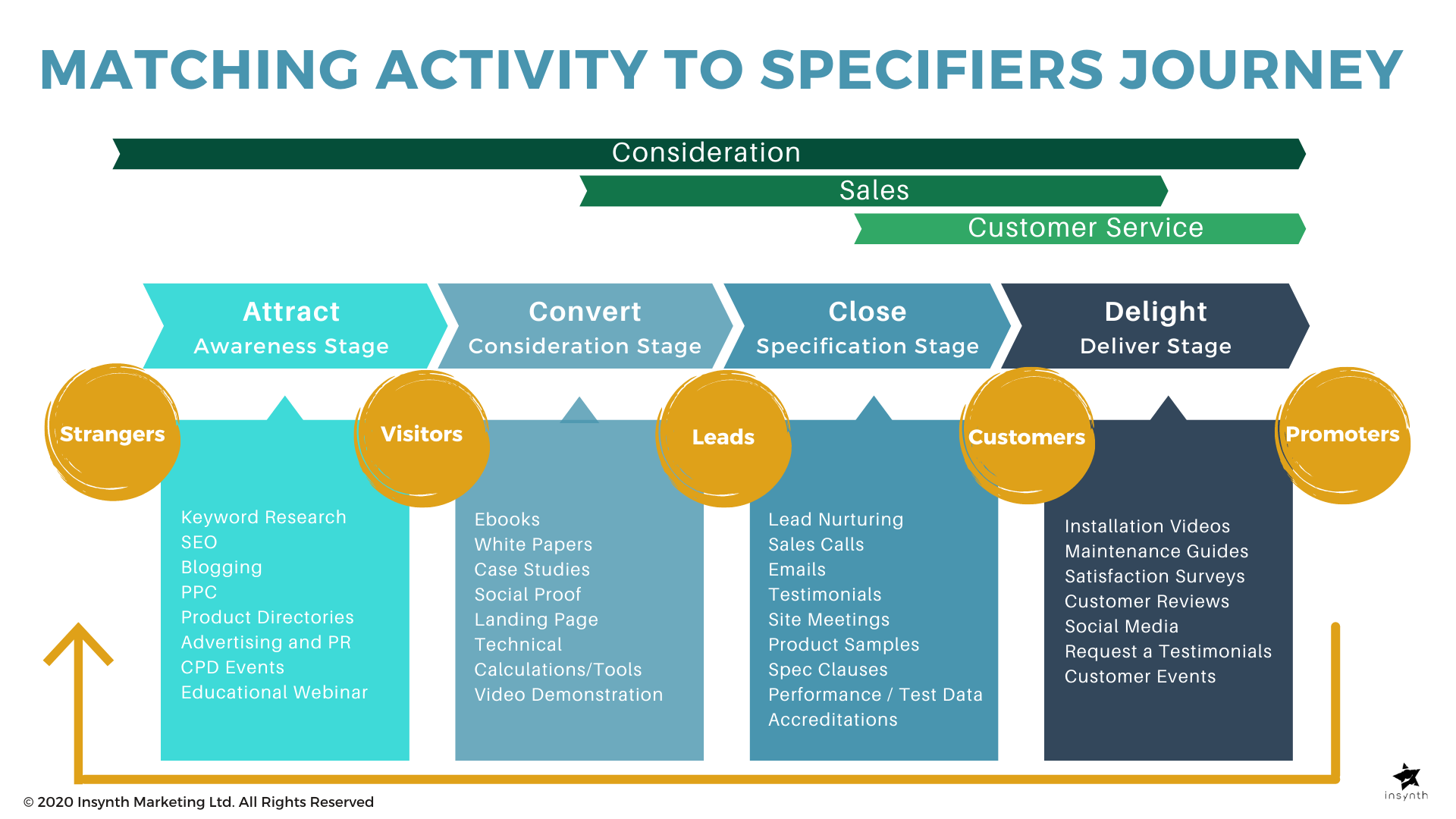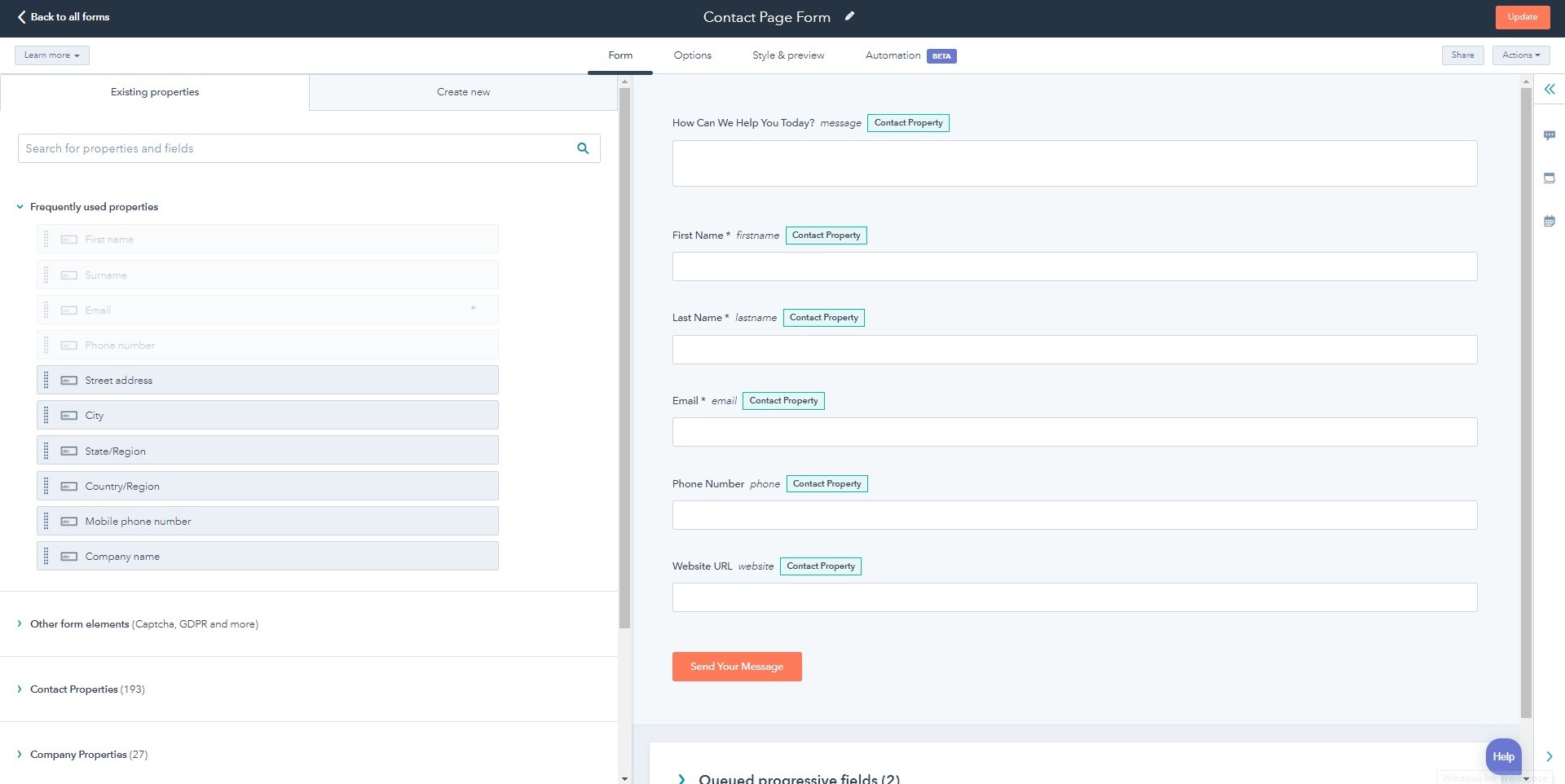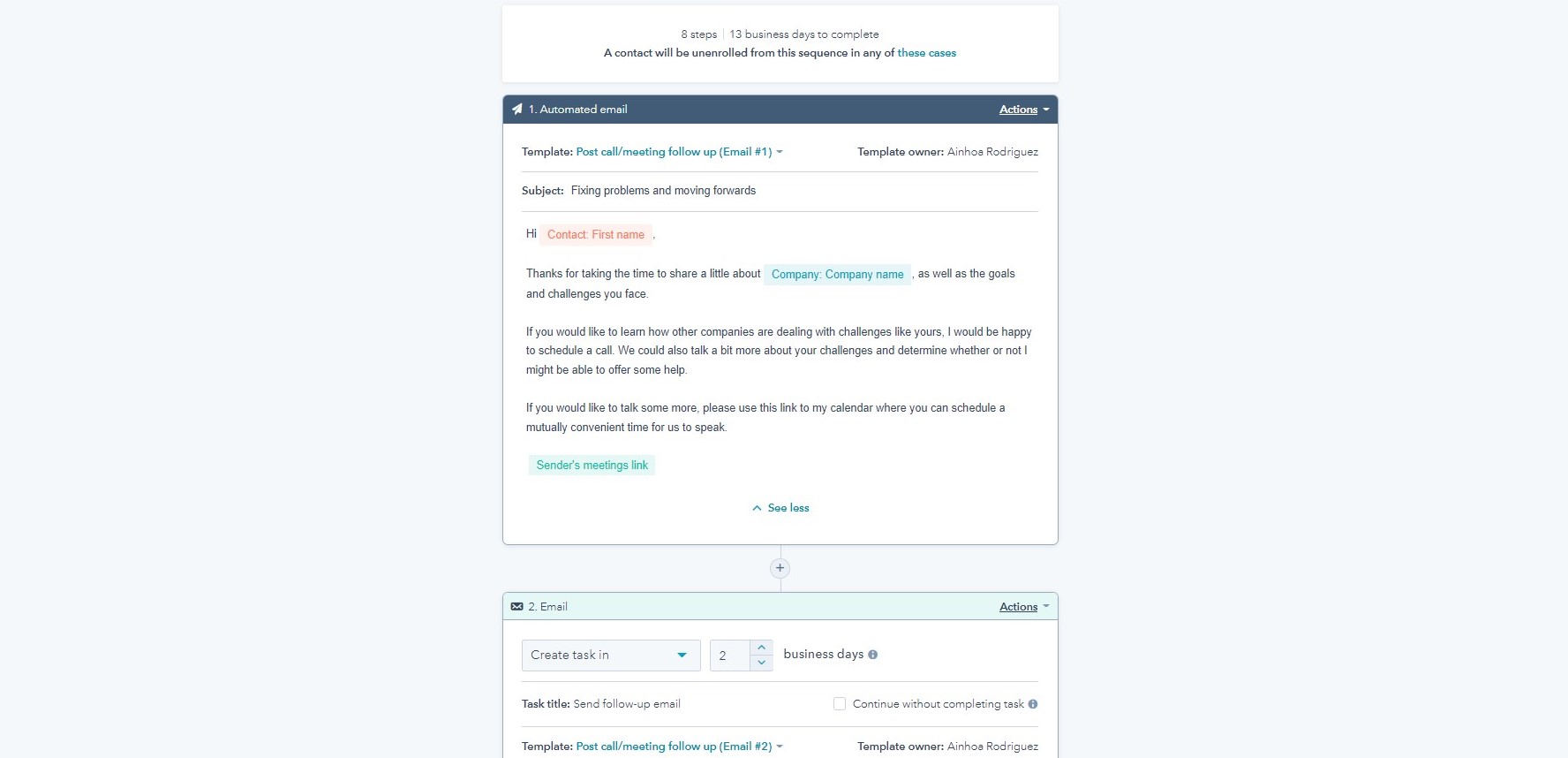6 min read
How To Follow-Up Construction Leads Successfully
![]() Ainhoa Rodriguez-Muguruza
:
04-Mar-2022 10:00:00
Ainhoa Rodriguez-Muguruza
:
04-Mar-2022 10:00:00

Despite the undeniable success of follow-up practices based on innovative marketing methodologies, such as inbound, salespeople within the construction industry, unfortunately, insist on holding onto outdated, spammy, and intrusive tactics.
In this post, we have gathered some of the most common mistakes we see when following up construction leads, as well as how to set up a lead management plan to avoid them.
5 Mistakes You Should Avoid When Following Up Construction Leads
Here are some of the crucial mistakes to avoid when following up with a lead that has gone cold…
#1 You Are Waiting On Your Leads
I know… This seems counterintuitive but, after a lead has shown interest on a product or a service, some companies decide to wait until that interest is reiterated or ratified through a second interaction.
This stance has been often taken due to a misleading interpretation of the principles of the inbound methodology, suggesting companies let the customer take the initiative.
So, yes, you want your construction leads to make the first move but…
That was their first move! They interacted with you! What are *you* waiting for? There is no colder lead than the lead that is not followed up and, chances are, if you do not follow up with them, someone else will.
We made an entire podcast episode on this particular point, 'What Is An MQL?' check it out below!
#2 Your Follow-Up Is Not Fast Enough
In their 2017 Lead Response Survey, Drift reported that only 7% of the companies surveyed followed-up within 5 minutes after an enquiry was made or a form was submitted.
If followed within 5 minutes, HubSpot found that leads were 9x more likely to engage with the salesperson!
This likelihood was reduced to 7x if the follow-up was done within the first 60 minutes after the initial interaction, as reported by Harvard Business Review.
Drift also discovered that 1 out of every 2 companies surveyed was not acknowledging enquiries until after 5 days since the initial interaction…
#3 You Stop After One Follow-Up
According to HubSpot, only 3 out of every 10 companies continue interacting with leads after the first follow-up email.
This means that 70% of the salespeople stop at one follow-up attempt! In fact, as reported by Marketing Donut,
- 22% stop after two follow-up attempts
- 14% stop after three follow-up attempts
- 12% stop after four follow-up attempts
Yet, as found by HubSpot, 3 out of every 5 leads will need over 4 touches before they say yes!
A study conducted by Woodpecker, in fact, reported that the 5th, 6th, and even 7th follow-up email presented an increase in the reply rate! Might be worth the effort, right?
#4 You Follow-Up With Construction Leads At Odd Times
Considering the metrics above, following up as soon as an enquiry seems to be a safe bet but, what happens when a lead goes cold?
According to Ringlead, you should avoid following up any leads on Monday, between 6am and noon, as well as on Friday, after 1pm.
If you are calling your leads, Wednesday and Thursday have been identified to be the days leads are more receptive!
Should you prefer to email them, an email sent on Tuesdays at 2pm, sees a much higher open rate likely to open your email!
#5 You Only Use One Follow-Up Method
Sales Insights Lab found that 2 out of every 5 salespeople believe their phone is the most effective sales tool at their disposal.
Yet, according to HubSpot, only 1 in every 5 leads would prefer to be contacted on the phone… The rests would prefer being reached through email.
Salespeople have also started using social media to follow-up with construction leads. 73% reported to Inside Sales that social selling has helped them reach their sales goals 23% more often.
Trying to add some variety to their interactions, some salespeople have started using text as a method to follow up leads. Texting, however, can be overly intrusive for some people, decreasing by 39% the likelihood of a lead answering.
Why You Should Set Up a Lead Management Plan (And Follow It!)
In a fantastic article on LinkedIn, Ryan Stewman, author of GCode: How to Stay Super Focused in a World Full of Distractions, addressed the elephant in the room… What is preventing salespeople from following up construction leads efficiently?
Stewman explained that salespeople often struggle to follow up leads because they do not have a system to do so. Simply, they are not sure of how to do it!
In order to solve this issue, Stewman recommends educating your sales team on the next steps that are to be taken when an enquiry is made, setting achievable expectations, and providing salespeople with more clarity.
An easy way to do this is through a lead management plan or protocol.
What Is A Lead Management Plan?
A lead management protocol should allow you to determine the value of a lead and categorise it based on specific criteria.
Understanding what makes a lead valuable will allow you to prioritise leads that are more likely to help you achieve your sales goals. It is about not only generating but also effectively routing and nurturing them.
An essential criterion to consider is the position of a lead on their buyer’s journey. The closer it is to making their decision, the faster your answer should be. Other factors to take into account are the source, the type of enquiry, and the buyer persona.
These determinants will give you the possibility to organise your follow-up activities, while providing those leads that are not yet that warm with more relevant interactions.

5 Elements Your Lead Management Plan Should Include
A study by Brevet revealed that 4 out of every 5 sales require over five follow-up interactions to close! Yet, we should not mistake quantity for quality.
You should make each of those interactions unique.
#1 Choose The Method(s)
As mentioned above, a common mistake made by traditional salespeople is to stick to a single outreach method, particularly when they rely solely on phone calls.
Ensure that your lead management plan includes different methods, including but not limited to email or social selling.
#2 Set The Cadence
Space out your follow-up interactions accordingly so the lead does not feel like you are trying to prompt their decision, especially if it involves a great investment.
This, of course, would differ depending on the product and how close the lead is from converting. It is all about balance!
#3 Provide High-Value Content
After a few unsuccessful follow-up, salespeople tend to feel discouraged. It is important that, regardless of previous interactions, the content you deliver is fresh and genuine.
Your interactions should always start with a polite check-in with your lead and their current professional situation. You should always keep present their pain points and guarantee the conversation remains relevant.
#4 Identify When to Stop
Your lead management plan should not only tell you when to start interacting with a lead, but also how to stop. Establish together with your sales team when they should stop following up, particularly when all the previous interactions have been unsuccessful.
Agree on a break-up email that will allow you to stop the conversation effectively.
#5 Be Consistent
If your team manages several salespeople, aim for their interactions to be consistent. For that, it is recommended that you agree an ideal length and tone of their interactions.
Make sure that your salespeople have access to the same bank of resources and that the documents that they have available are the most updated version.
Automate Your Construction Lead Management Plan
Salespeople are often wary of automation. And rightfully so!
If not done properly, automation can be impersonal and dull, defeating the purpose of following up with a lead in a relevant and efficient way.
That should not, however, keep us from seeing the ways an automated CRM can help your sales team adhere to your lead management plan and complete their follow-up activities timely and successfully.
As HubSpot Partners, we have helped dozens of companies adopt a new CRM that support them as they build the conversation with their construction leads.

Turn Submissions into a Qualifying Process
When creating the forms that your leads will submit their enquiries through, HubSpot allows users to customise each element. As a result, you can that you are gathering the information that you need to qualify the enquiry.
This will save you time from engaging with leads that are clearly not a good fit and allow you to prioritise those more promising enquiries.
An easy way of qualifying your construction leads is by asking about their budget, their timeframe, and their location. If the enquiry does not meet your criteria, set up a post-submission automated email pointing the lead into the right direction.

Automate Low-Priority or Prospecting Conversations
If the number of leads is not manageable for your team, qualifying leads and categorising them by priority will give you the possibility to automate the follow-up of those that are not quite warm yet.
Automating these interactions will allow your team to truly focus on those leads likely to convert, providing them with a better customer service.
HubSpot allows you to automate these tasks through workflows. As less time is spent on basic tasks, automation allows you to focus on more important projects! You can use workflows to
- Nurture first submissions
- Notify your sales reps about a lead that has shown a high likelihood to convert
- Re-engage cold leads who have lost interest

Queue Up Your Salespeople’s Follow-Up Activities
Through HubSpot’s sequences, you can streamline the follow-up tasks that your salespeople need to complete for every high-priority lead.
These tasks can include any action, from sending a personalised email, to triggering an automated email, or messaging the lead on LinkedIn. With these queues, you can guarantee that your salespeople’s interactions are consistent and follow your lead management plan timely.
HubSpot has default task queues, designed to help you achieve particular goals, such as
- Prospecting a new conversion
- Following up with a prospect you met at a trade show
- Following up after your initial call with the rep
- Following up after a voicemail
Conclusion
When you have a thousand things you’re trying to do, carefully following up construction leads can slip your mind, especially when a system isn't in place. It can be even harder to make every outreach attempt feel personal and authentic when you have targets to reach. But, with a clear system and an agreed process, you'll find yourself smashing sales targets!
About Insynth
At Insynth we deliver a predictable flow of leads, customers, and specifications for building product brands through our inbound marketing approach, proven to reach a technically demanding audience.
We use the latest marketing techniques such as construction inbound marketing, to equip building product companies to grow sustainability in this era of digital transformation.
As the only HubSpot certified agency to major in construction marketing. We have a proven formula of bringing a variety of functionalities together including CRM Implementation, Web Design, Sales Automation, SEO, and Email Marketing to achieve your ultimate aim: Growing your business and gaining new specifiers and customers.


